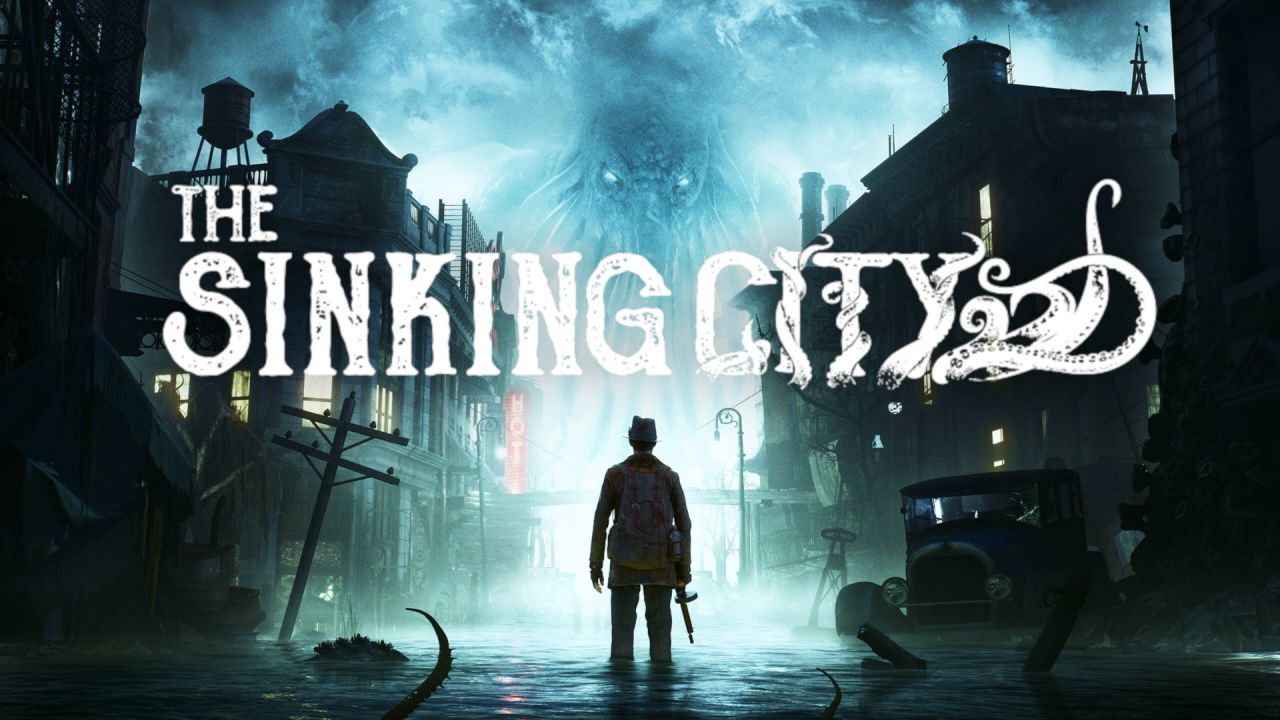The Sinking City - Switch Review

The Sinking City has you play as Charles Reed, a private investigator who is on a mission to uncover the mystery of his strange visions on the remote island city of Oakmont. With unusual flooding, strange creatures known as Wylebeasts now threaten the city and its citizens are struggling to remain sane.
Gameplay
As a private investigator, you’ll be tasked with searching for evidence. When doing so, you’ll be able to step into scenes of the past using Charles Reed’s Mind’s Eye ability that reveals the truth of what really happened. However, you can’t stay in this vision for too long as your sanity bar will drop, leaving you with violent shakes and feelings of hysteria. Rest a bit so that you can uncover more and more clues and piece them all together in the Mind Palace.
Controlling Charles can feel sticky and awkward, sometimes delayed even. The camera is especially awkward, with it arguably being too close to the character along with a delay in turning it. This essentially makes combat and shooting unintuitive and whilst the added gyro aiming helps, it doesn’t fix the core issue.
When it comes to the gameplay, The Sinking City shines more in its detective work. There are many things that you can do in order to find clues and solve mysteries, like rifling through archives, interviewing witnesses and scanning locations for evidence. The game doesn’t hold your hand either, forcing you to analyse clues and reach your own conclusions. The options in dialogue also allows you to shape your own outcome, but things don’t always turn out the way you plan them.
The concept of currency is null and void in the city after the flood had occurred. The townsfolk saw no further need for money and instead traded in bullets for protection against strange creatures.
Enjoying our The Sinking City Switch review so far? Don’t forget to like us on Facebook and follow us on Twitter for more Nintendo Switch content. Also, please consider supporting us on Patreon so that we can continue to do what we love doing.
As likely yet disappointedly expected, the Nintendo Switch version of The Sinking City suffers from frequent frame rate dips. Nothing game-breaking or to the point of unplayable, but they are certainly noticeable regardless. As a result, travelling on foot is clunky and awkward, making slow-paced detective work the highlight of the experience. As the game has previously been released on PC and other consoles, I was able to compare them and a clear difference was instantly noticeable.
World Design
The open world design of The Sinking City adds quality to the detective gameplay. During quests, you won’t simply receive a marker for where you need to go next, rather you’ll receive some details (in northern Coverside at the crossroad of Asher Rd and Hubert Ave, for example) and it is up to you to find the location on your map and mark it. This helps to recreate the true feeling of detective work back in the 1920s and doesn’t hold your hand.
As is the theme, some streets are flooded, requiring you to travel by boat. This provides variety to the mundane task of traversing an open world more engaging whilst providing depth to the game’s environments. However after the initial excitement wears off, it can grow to become repetitive. But luckily enough, as you continue to explore, you will find and unlock telephone booths that act as fast-travel points. To fast-travel, you’ll need to go to one of these booths and select another on the map (Matrix style).
Story
The Sinking City blends the real world seamlessly with the supernatural. Charles may begin to be taken aback at the monsters’ odd occurrences, but it soon becomes the norm, providing great character development in the odd environment he has found himself in. The game does a great job at setting the scene and introducing characters that contain an heir of intrigue. The customs and lore of the city continues to be enticing as the plot thickens, with its own dialect and phrases. You are instantly felt to stick out like a sore thumb with everyone referring to you as “newcomer”, but Charles Reed has his own wit and silver tongue that constantly makes its story-beats engaging.
Prejudice and racism is a prominent theme throughout the game. There are mixes of races among the game’s characters, but they take on humanoid versions of various animals, with fishmen known as Innsmouthers and ape-like humans known as Throgmortons. This diversity provides prejudicial motives and deepens the plot and the lore of the game.
The plot progression will often lead to crossroads which require you to make crucial decisions that can have an effect on Charles Reed and the characters around you. This adds to the game’s replayability with a variety of pathways and story options to delve into/
Graphics / Art Direction
The Nintendo Switch version of The Sinking City unfortunately suffers from a substantial downgrade to the point of muddy textures and corners being cut, especially in handheld mode. The game has horrendous draw distance, meaning that foliage and other such minor object models don’t come into view until you’re just a few meters away from them. It doesn’t affect the gameplay as everything that is important shows up when it needs to, but it’s jarring to see some weeds appear when you’re only three steps away from them.
Facial animations are impressive, seeming to evolve from the face-capture technology that was used in L.A. Noire. However it doesn’t impress all the time, with some occasionally odd moments and out of sync lip movements that will make you chuckle more than anything.
The Mind’s Eye ability brings forth an unnerving display of dark figures. As you continue to search crime scenes, you’ll also be subjected to silhouettes depicting threatening and creepy images which does a great job on playing on your own mind.
Your mental health meter is just as important as your HP. If you stay in Mind’s Eye for too long, or observe something that’s unsettling, the screen will warp and twist, imitating Charles’ shocked and unnerved reaction. This graphical technique blends well with the gameplay, adding more depth to the overall experience.
Music / Sound Design
The soundtrack is less of a soundtrack and more a library of eery tones and sounds that aim to create an air of unnerving horror. The voice acting is well done and to a high standard. However, there are occasional moments when the dialogue is ill-timed, making parts of a conversation come across as unnatural.
Final Score: 67%
The Sinking City is a great game at its core, but its port to Switch leaves it a husk of what it could be. The detective work is its highlight with slow and methodical gameplay, but the action is clunky and the frame rate dips don’t help. A performance patch could help The Sinking City be a great addition to your Switch library but at the time of this review, you’d be better of spending your hard earned cash on a PC/PS4/Xbox One version.
Thank you for checking out our The Sinking City Switch Review and thank you to our $5 and up Patreon Backer for their ongoing support:
- Belinda Cubitt
